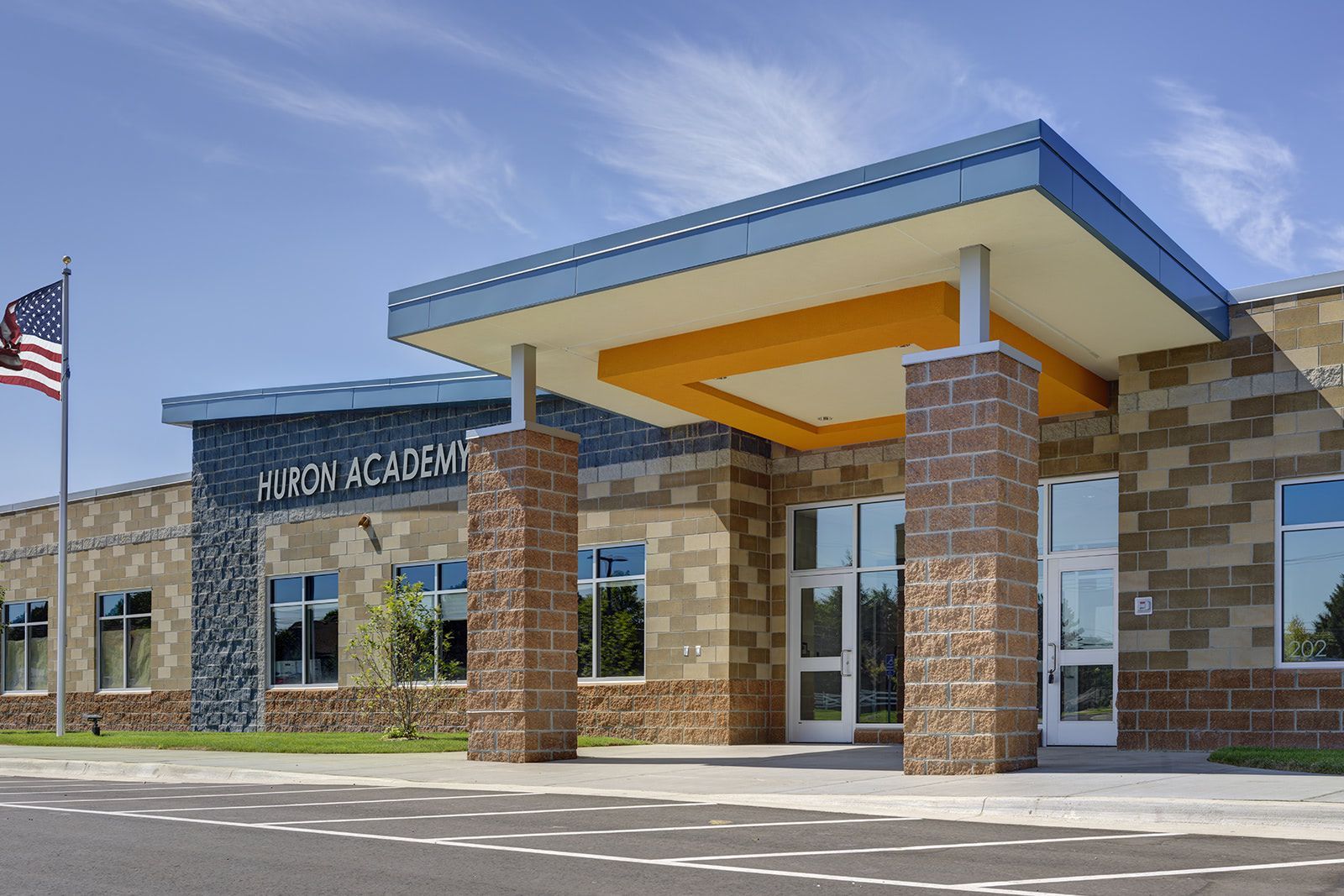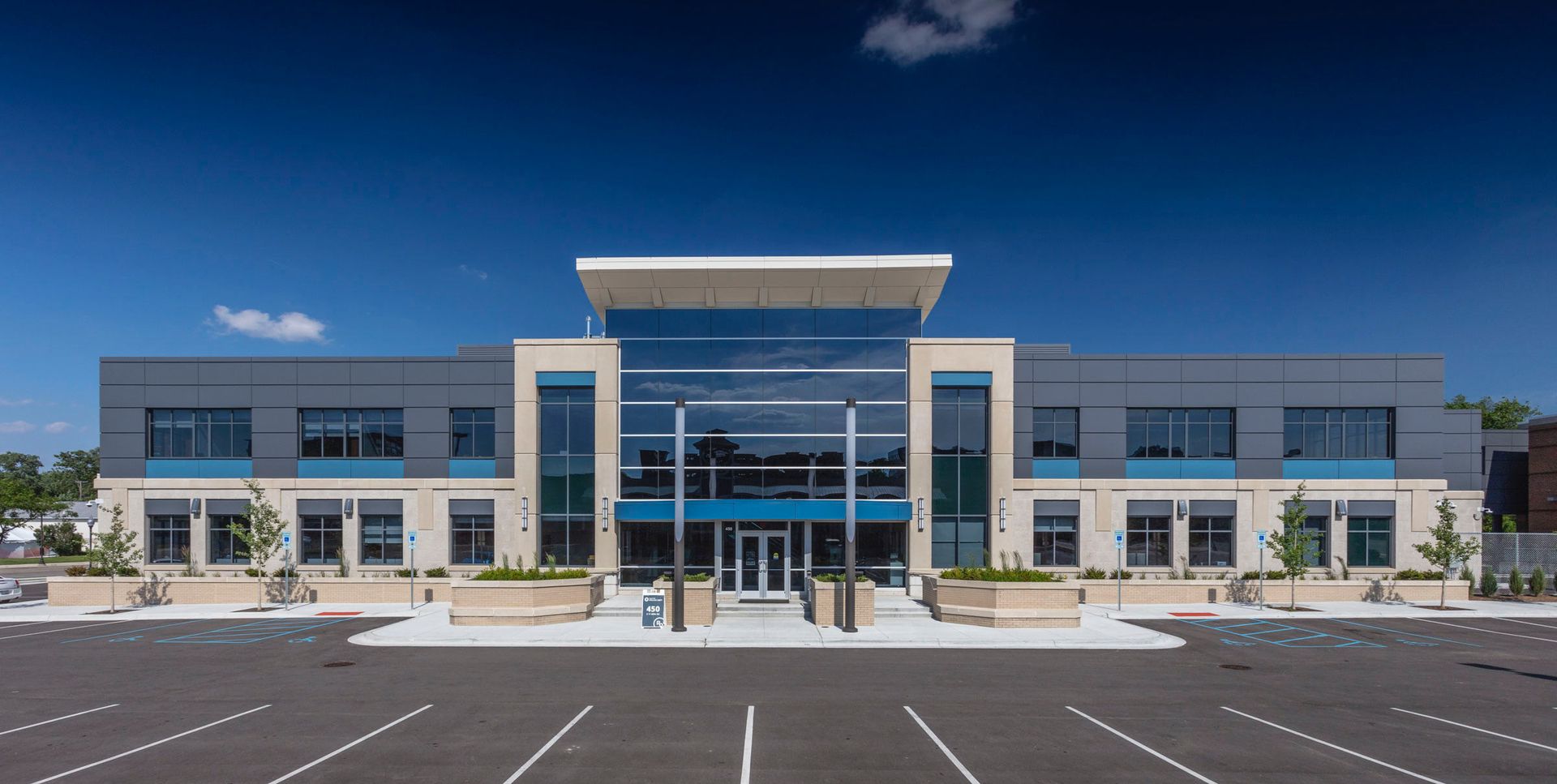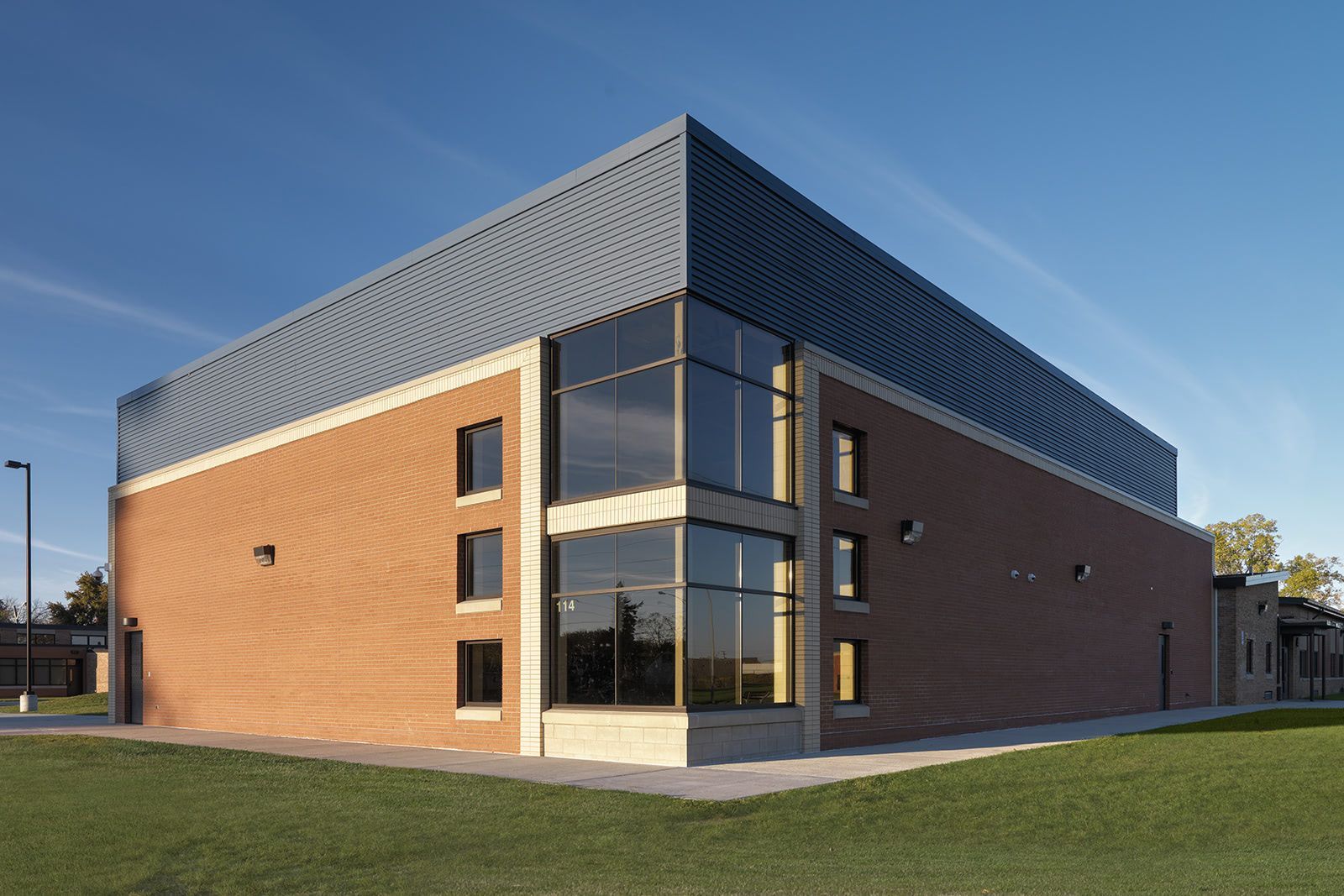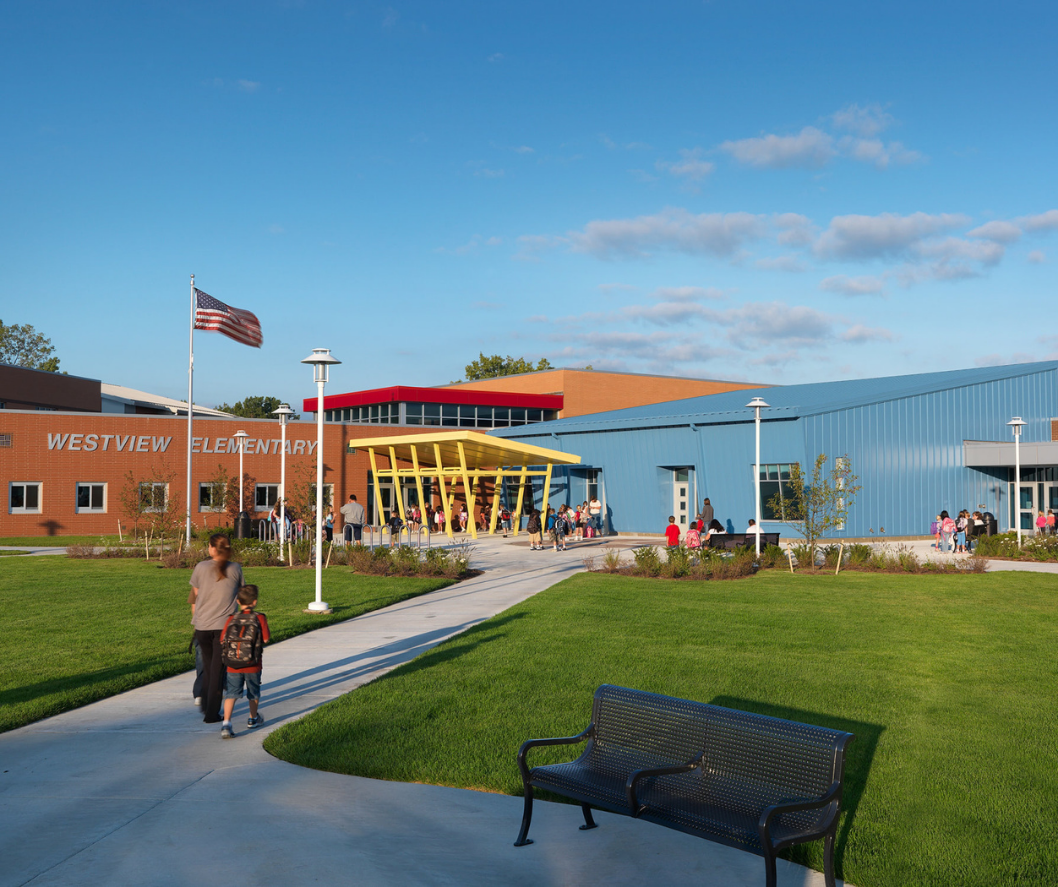Modern Police Station Design | Architecture for Safety and Community
Designing for Safety, Wellness, and Trust: The Role of Architecture in Modern Police Stations
What does safety feel like—from both sides of the badge?
For the public, it might be a sense of reassurance when walking through a police station's front doors.
For law enforcement professionals, it's the ability to perform their duties in an environment that supports their well-being, operational efficiency, and protection.
At Partners in Architecture, we understand that police stations are more than utilitarian buildings. They are community landmarks and essential civic assets that must serve a wide range of users and functions.
Designing these spaces with intention means balancing security with accessibility, performance with comfort, and tradition with adaptability.
In this blog post, we’ll explore how thoughtful design supports officer and staff wellness, incorporates essential safety measures, builds trust with the community, and adapts to evolving needs.
At Partners in Architecture, we believe every design decision is an opportunity to serve the greater good (learn more about who we are). By listening first and designing with empathy, we create spaces that reflect community values and support those who dedicate their lives to public safety.
Designing for the People Who Serve
Wellness is central to the effectiveness of any public safety team. A thoughtful architect creates designs that provide officers and staff with the tools to manage stress, stay healthy, and work with focus.
Modern facilities incorporate fitness rooms, secure vehicle storage, and acoustically quiet environments
At the Royal Oak Police Station, for example, a fully-equipped fitness center was placed directly below the public lobby. Acoustic floor treatments ensure the noise of workouts doesn’t disturb spaces above, showing how small, but intentional, architectural details can enhance both staff morale and public experience.
A modern police station also includes amenities that support mental health, such as meditation rooms, calming color palettes, and private areas for rest.
Staff support is also essential. 911 dispatchers benefit from upgraded lighting and acoustics to reduce fatigue. The addition of private mothering rooms creates a more inclusive workplace.
Wellness extends beyond individual features; it is about creating an overall atmosphere of respect and support.
Locker rooms designed with dignity in mind, break areas that allow for social connection, and outdoor spaces that give staff a chance to step into fresh air all contribute to a healthier workplace culture.
When officers and staff feel that their environment is designed with their needs in mind, it reinforces morale and builds long-term commitment to their mission.
According to the 2024 “What Cops Want” survey of nearly 3,000 officers, 83% reported that their mental health directly affects their work performance.
Architectural design can play an important role in addressing this challenge with features that help reduce stress, including better lighting, acoustics, and restorative spaces...
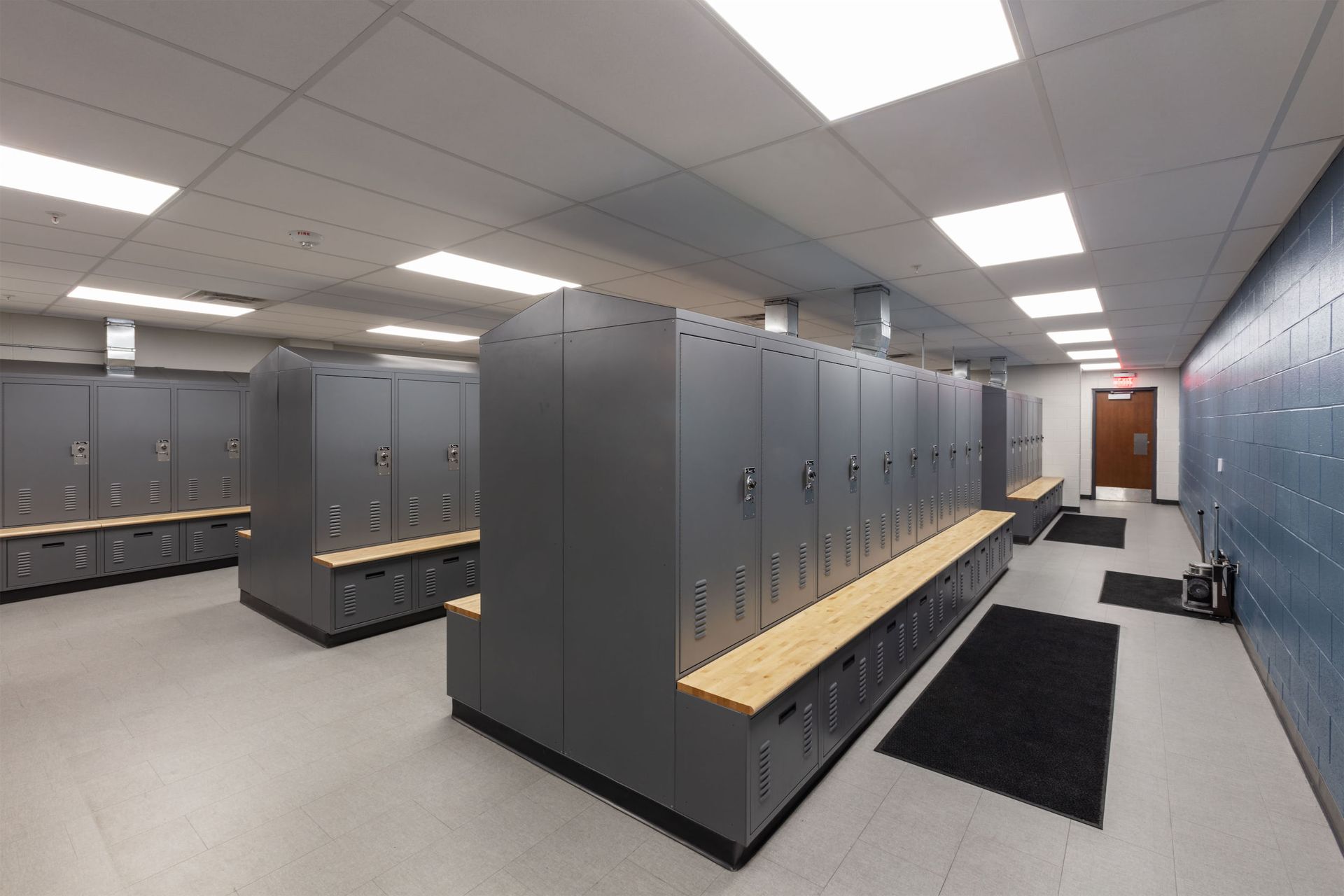
Safety by Design: Protecting with Purpose
Safety is non-negotiable in police station design. From secure sally ports to ballistic-rated doors, layered security is built into the fabric of the facility.
Yet these protective measures don’t need to create an intimidating atmosphere.
Thoughtful design hides much of the security infrastructure in plain sight. The result is a workplace where officers feel secure, while the public experiences a welcoming environment.
Protection and hospitality can coexist when design is intentional.
This balance requires careful planning. Circulation pathways separate detainees from staff and the public, reducing conflict points and maintaining order.
Sally ports and secure transfer areas ensure that detainees can be brought in safely while minimizing risks to officers.
Ballistic glass, reinforced walls, and controlled-access doors provide a critical line of defense, but they are integrated seamlessly so the building feels open rather than fortified.
Technology also plays a key role in protection. Surveillance cameras, card access systems, and backup communications ensure constant awareness and preparedness.
These tools are embedded into the architecture rather than showcased, reinforcing safety without eroding trust. In this way, the police headquarters becomes both a stronghold for those working inside and a place of reassurance for the community outside.
Designing to Build Trust with the Community
Police stations must be approachable, not impenetrable.
The entrance is a vital first impression, and open lobbies, community meeting rooms, and safe exchange spaces for custody arrangements or marketplace sales allow residents to interact with law enforcement in positive, everyday ways.
Research from Arizona State University shows that the design of police stations shapes how community members perceive justice. Welcoming, open buildings are associated with higher feelings of fairness, while fortress-like designs can signal hostility.
Other survey experiments confirm that a building’s design measurably influences public sentiment, with “welcoming” stations creating more positive emotional reactions across diverse groups.
In fact, one study found that welcoming station designs were particularly impactful for people with prior arrest experiences, producing more positive emotional responses than hostile designs.
By creating spaces for dialogue and partnership, the building itself becomes a bridge between officers and the public. This openness fosters transparency and helps build the trust on which effective policing depends.
Trust-building is also about creating spaces that reflect respect and dignity.
Comfortable waiting areas, clear wayfinding, and natural daylight can make a public visit less stressful. Multipurpose community rooms provide space for neighborhood meetings, youth programs, or training events, demonstrating that the facility belongs to the whole community—not just law enforcement.
Design choices send messages. When residents see their police department as a place where they are welcome, it reinforces trust and accountability.
Architecture alone cannot build relationships, but it can create the conditions where relationships are encouraged and grow stronger.
Planning for Today and Tomorrow
Behind the welcoming public spaces, a police station must function as a highly efficient workplace.
Circulation patterns, departmental adjacencies, and durable systems all play a role in keeping operations running smoothly.
Evidence processing, for example, requires secure, adaptable environments that support chain-of-custody requirements and long-term storage.
Designing for the future is equally important. Facilities must anticipate new technologies, evolving laws, and changing community needs.
Gender-equitable locker rooms, mental health response spaces, and offices for civilian professionals like counselors and therapists are now part of modern law enforcement facilities.
In some cases, these needs simply cannot be met through renovation. Many older municipal buildings, including outdated fire stations and police facilities, were not designed with today’s expectations in mind.
They often lack the space or infrastructure for meaningful updates. New construction allows departments to create safer, more inclusive, and more efficient facilities from the ground up.
An experienced architectural firm can help municipalities assess whether renovation or new construction offers the best path forward.
Architecture as Public Service
At their best, police stations embody the dual mission of law enforcement: to protect and to serve.
Through thoughtful design, these facilities can safeguard officers, welcome the community, and adapt to future needs, all while reflecting the values of the people they represent.
Throughout this piece, we’ve seen how wellness-centered spaces support the people who serve, how safety and approachability can coexist, how design fosters community trust, and how future-ready planning ensures long-term value.
Police station design is about functionality, and it is about building environments where safety, dignity, and trust thrive.
At Partners in Architecture, every police station project is an act of public service.
By listening closely, designing with care, and planning with foresight, we help communities create facilities that strengthen trust, support wellness, and deliver safety for generations to come.
If your community is exploring a new or updated police facility, we invite you to start a conversation with our team.
Book a consultation with Partners in Architecture today, and let’s design a space that serves both those who protect and the community they call home.
Frequently Asked Questions:
Why build a new police station instead of renovating an old one?
Many older municipal facilities were not designed with today’s needs in mind. They often lack inclusive features, flexible layouts, and the infrastructure required to support modern technology. New construction can offer long-term value by providing spaces that are safer, more adaptable, and more efficient.
How does design balance security with community accessibility?
Police headquarters require strong protective features, but they don’t need to be intimidating. By integrating security measures subtly—such as controlled access, reinforced materials, and carefully planned entrances—facilities can remain welcoming while keeping staff and visitors safe.
What role does officer wellness play in design?
Officer and staff wellness is central to effective public safety. Fitness areas, meditation rooms, quiet break spaces, and supportive amenities for dispatchers and mothers are examples of how architectural design can reduce stress and improve long-term well-being.
How do these facilities support the broader community?
Police stations are designed to be more than workplaces. With open lobbies, community meeting rooms, and safe exchange spaces, they become civic resources where residents feel welcome and secure.
How do you plan for future needs in a police facility?
Flexible layouts, adaptable evidence rooms, and integrated technology systems ensure that stations can evolve with new laws, updated protocols, and shifts in community expectations.


